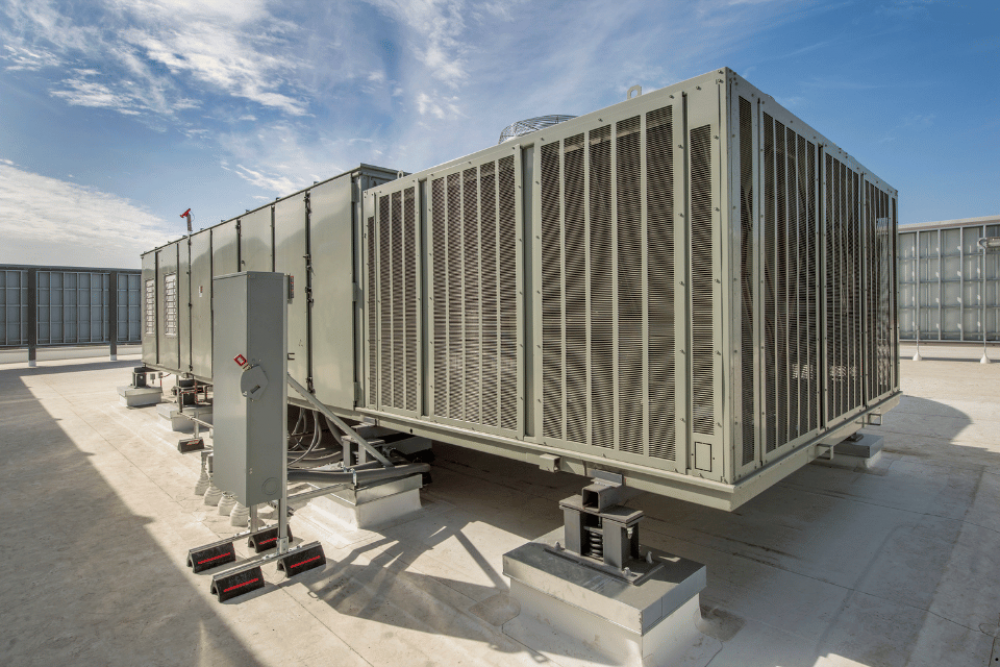
HVAC Challenges and Solutions in Commercial Buildings
Heating, Ventilation, and Air Conditioning (HVAC) systems are crucial in commercial buildings, ensuring comfort, air quality, and energy efficiency. Effective HVAC management is vital, yet it presents numerous challenges that require innovative solutions to optimize performance and reduce operational costs. We will explore the key challenges HVAC systems face in commercial buildings and examine sustainable solutions to enhance their functionality.
Challenges in HVAC Systems
1. Maintaining Optimal Indoor Air Quality
One of the primary challenges in commercial HVAC systems is maintaining optimal indoor air quality (IAQ). Commercial buildings often accommodate large numbers of occupants and diverse activities, leading to varying levels of pollutants such as dust, volatile organic compounds (VOCs), and allergens. Poor IAQ can lead to health issues and decreased productivity among occupants. HVAC systems must efficiently filter and ventilate air while minimizing energy consumption to ensure a healthy indoor environment.
2. Energy Efficiency and Operational Costs
Energy efficiency is a significant concern for commercial HVAC systems due to their substantial energy consumption. Inefficient systems not only increase operational costs but also contribute to environmental impact. Optimizing energy efficiency involves integrating advanced technologies such as variable air volume (VAV) systems, energy recovery ventilation (ERV), and smart controls. These technologies help regulate airflow and temperature more effectively, reducing overall energy demand and operational expenses for building owners.
3. Adapting to Changing Environmental Regulations
Another challenge facing HVAC systems in commercial buildings is the need to comply with increasingly stringent environmental regulations. Regulations aimed at reducing carbon emissions and improving energy efficiency impact HVAC design, installation, and operation. Building owners and facility managers must stay updated on regulatory changes and implement compliant HVAC solutions. This may involve upgrading equipment, adopting renewable energy sources, or enhancing maintenance practices to align with regulatory requirements and avoid penalties.
4. Integration with Building Automation Systems
Integrating HVAC systems with building automation systems (BAS) poses challenges and opportunities. BAS allows centralized control and monitoring of building systems, including HVAC, lighting, and security. However, seamless integration requires compatibility between different system components and protocols. Interoperability issues can hinder system performance and data accuracy, affecting overall building efficiency. Overcoming these challenges involves selecting compatible equipment, standardizing protocols, and implementing robust communication networks to optimize BAS functionality.
5. Maintaining System Reliability and Durability
Reliability and durability are critical considerations for commercial HVAC systems, which operate continuously to maintain comfort and IAQ. System failures or downtime can disrupt business operations, leading to financial losses and tenant dissatisfaction. Regular maintenance and proactive monitoring are essential to identify potential issues before they escalate. Additionally, investing in high-quality equipment and components can enhance system reliability and longevity, reducing the frequency of repairs and replacement cycles.
Solutions for Enhanced HVAC Performance
1. Implementing Predictive Maintenance Strategies
Predictive maintenance from Prime Time Heating And Air LLC leverages data analytics and IoT sensors to monitor real-time HVAC system performance. By analyzing operational data and detecting anomalies early, facility managers can schedule maintenance proactively, preventing costly breakdowns and optimizing system efficiency. Predictive maintenance extends equipment lifespan and reduces energy consumption by ensuring that HVAC components operate at peak performance levels.
2. Embracing Smart HVAC Technologies
Advancements in smart HVAC technologies offer innovative solutions to enhance system performance and energy efficiency in commercial buildings. Smart thermostats, for example, use occupancy sensors and machine learning algorithms to adjust temperature settings based on occupancy patterns, reducing energy waste. Likewise, IoT-enabled HVAC systems provide remote monitoring and control capabilities, allowing facility managers to optimize operations and respond promptly to maintenance needs. Integrating these technologies improves comfort, IAQ, and operational efficiency while lowering energy costs.
3. Investing in Renewable Energy Integration
Commercial buildings are increasingly integrating renewable energy sources such as solar and geothermal energy to mitigate the environmental impact of HVAC operations. Renewable energy systems can supplement traditional HVAC systems, reducing reliance on fossil fuels and lowering carbon emissions. Additionally, onsite renewable energy generation can contribute to energy cost savings over the long term, making it a sustainable investment for building owners committed to environmental stewardship.
4. Enhancing Employee Training and Education
Effective operation and maintenance of HVAC systems depend on well-trained personnel who understand system complexities and operational protocols. Investing in ongoing training programs for facility managers and HVAC technicians ensures they remain updated on industry best practices, emerging technologies, and regulatory requirements. Well-trained personnel can optimize system performance, troubleshoot issues effectively, and implement energy-saving strategies, contributing to overall operational efficiency and tenant satisfaction.
HVAC systems play a crucial role in maintaining comfort and air quality in commercial buildings, but they face numerous challenges related to energy efficiency, regulatory compliance, and system integration. Building owners and facility managers can enhance HVAC performance while reducing operational costs and environmental impact by implementing innovative solutions such as predictive maintenance, smart technologies, renewable energy integration, and employee training. Embracing these solutions improves building efficiency and tenant comfort and positions commercial properties for sustainable growth in an increasingly competitive market.

